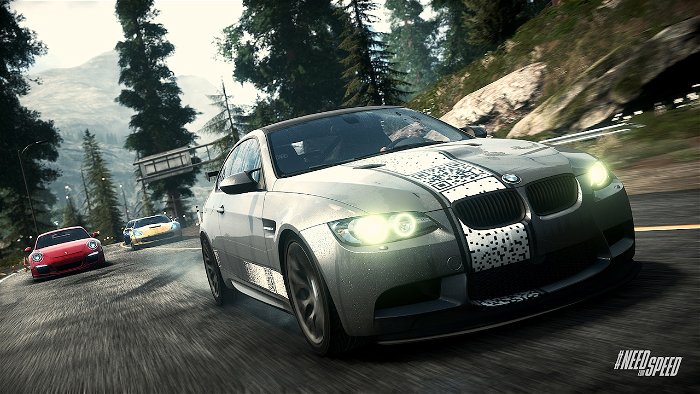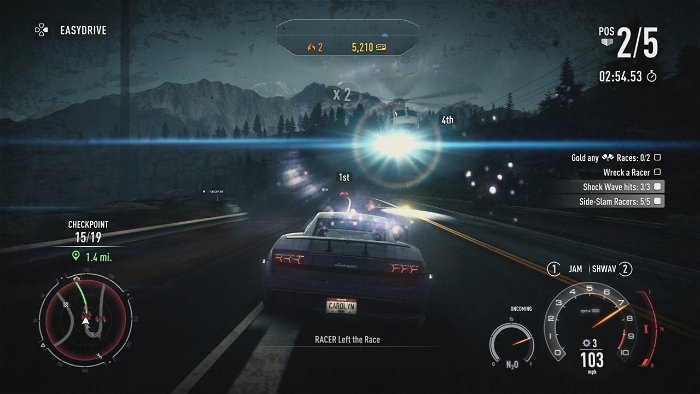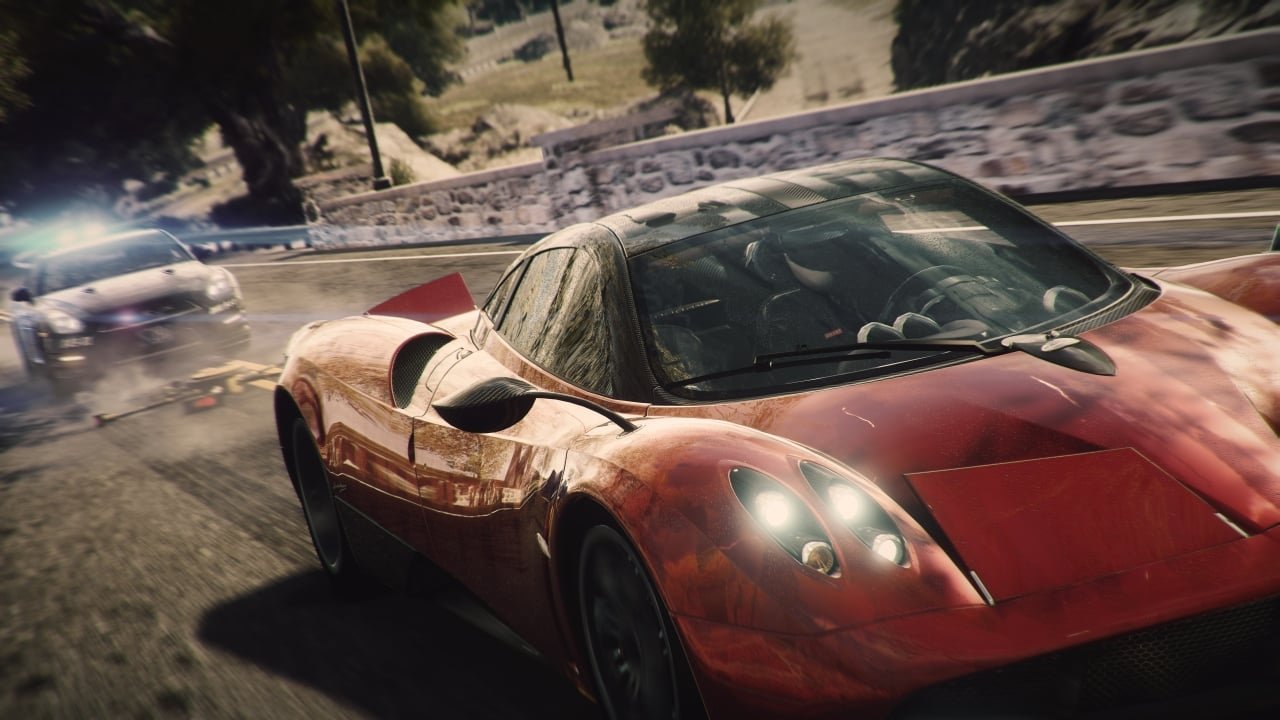While Need for Speed: Most Wanted was a solid title for 2012, it never captured the hearts and minds of people in the same way that 2010’s Need for Speed: Hot Pursuit did. Most Wanted taught Electronic Arts that people really want to play cops and robbers using extremely powerful, and more importantly virtual, sports cars. That’s why Need for Speed: Rivals feels like EA took the superior car handling and physics from Most Wanted and mixed them with the gameplay of Hot Pursuit.
Sadly, after expending a lot of time and money EA still failed to recapture the thing that made Hot Pursuit so great; playing cops and robbers with other people. You see, Hot Pursuit used a traditional multiplayer lobby system that would force people onto teams of cops or racers. The game would then drop these teams onto a section of the open world map to chase each other to the finish line. In contrast, Rivals has what the developer calls the All Drive system. Basically, the open world is the multiplayer lobby, and people can drive to whatever event they wish to compete in whenever they want to compete in it. They can even drive up to other people (real or A.I.) and challenge them to one-on-one races. The All Drive system is unique in that there are no load screens to stop the action in Rivals. Any event you begin will start right then and there.

While All Drive is a fluid and impressive system, Rivals has a player limit of only 6 people and a game space that is best described by words like giant, colossal, immense, mammoth, gargantuan, and also stunningly beautiful. Since the six player controlled cars can drive where they want when they want, it doesn’t take long for everyone to spread to the map’s four corners. The big issue with Rivals is that it lacks a lobby system to organize events, so you become the system that must convince everyone to play together. It’s a problem that might be impossible to solve if you’re playing with strangers who have no reason to listen to you. The alternative is to follow the game’s logic of organized chaos, and just choose to run into people as you randomly cross paths. With the small player limit and large game space this plan is problematic as well. A multiplayer session can go on for hours and hours before you cross paths with another living soul. Actually, according to the game’s logic you’re never actually guaranteed the chance to cross paths with another living soul, so I really hope you enjoy playing with bots.
To make matters worse, every multiplayer session is hosted by one of the players in that session, and when that host leaves the session is over. The game will quickly transfer everyone to a new session, so this isn’t a problem until you reach the point where progress is lost. There are a number of activities that the game will force you to complete in one session, but the activity I had biggest issue with was collecting 100,000 points in a single session. To borrow some MMO parlance, collecting 100,000 points takes a lot of grinding in Rivals. It can be frustrating to get in the area of 90,000 points, only to watch helplessly as the host leaves. I almost destroyed my TV the second time it happened. That might sound extreme, but in a second all of my hard work vanished because another player turned off his console. It’s hard to believe, but Rivals has a multiplayer system that drove me to play offline to ensure another player couldn’t accidently hamper my success.
In the story telling department, both the cops and the racers have an intertwined but separate story arc that revolves around illegal street racing. For reasons I don’t understand, the racers attempts to get very philosophical about racing when explaining their motivation. It almost like your avatar in Rivals has two hobbies: illegal street racing and writing Tengen Toppa Gurren Lagann fan fiction. As the story unfolds between completed objectives, it feels like the racing and the fan fiction start to mesh together. No matter how you want to describe it, there becomes a point where the racer’s motives are hard to follow. The cop on the other hands is easy to follow. He is just a raging dick. Like Toronto Mayor Rob Ford, the cops of this game believe they’re the only ones who can get the job done, and so they break all of the rules to remove every street racer from the face of the earth.

The game really does make more sense when you take the story away and only deal with the game-play mechanics. Basically, racers drive around the world collecting experience points (known in Rivals as Speed Points) by doing a bunch of activities at unsafe speeds. The more activities completed in one chain, the bigger the wanted level gets. The bigger your wanted level, the higher that score multiplier and thus the more points you collect. When the cops come after you and it’s not looking good, the racers need to make a break for one of their hideouts before they’re busted by the law. Make it back with the points and you get to put them in the bank. You’ll rank up another level once enough points are collected, and each level earns you a new car. Cops for their part collect most of their points by busting racers and stealing their points; however, both sides can complete a series of time trials and other events to earn points as well.
With that said, I am still happy to report that Rivals is actually a decent game because it doesn’t drive that far from the road that Criterion paved for the franchise. Franchise stables like the Easy Drive menu system (which allows for easy navigation around the world map) or the Autolog (which tracks everything you do so you can constantly compete with friends) remain part of the foundation of this game. The cars feel very heavy but responsive, the activities that populate the world are exciting, constantly fighting over speed points can result in some of the game’s best moments, and there is a beautiful game-space full of cool areas to explore. The game even maintains that indescribable Criterion touch that has been evangelized since the Burnout series became popular.
Overall, you only need to boot the game up once to see that a talent team of professionals put it together with hard work and sweat. I only wish that this game, played on state of the art console hardware, was not outclassed in the multiplayer department by a 6-player X-men arcade cabinet that Konami made in 1992.





